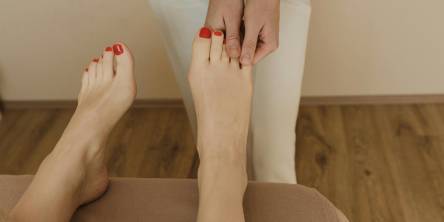9 Effective Tips on How to Recover After Spine Surgery

Spine surgery is a crucial procedure that needs thorough post-operative care and rehabilitation. Recovery from spine surgery can be difficult, but with the appropriate attitude and support, you can improve your healing and regain strength and mobility. In this article, we will discuss nine effective tips to help you recover after spine surgery and get back to your daily activities.
1. Follow your surgeon's instructions
One of the most important components of a good recovery is paying close attention to your surgeon's post-operative instructions. This includes taking medications on the plan, maintaining activity limitations, and attending all follow-up visits. Your spine surgeon is familiar with your individual situation and will give specialized advice to achieve a quick recovery.
2. Manage pain and discomfort
Even though pain is typical after spine surgery, it may be effectively addressed with medication recommended by your surgeon. Take the medications as advised, and don't be afraid to talk to your doctor about any concerns or problems that arise. Alternative pain treatment strategies such as cold or heat therapy, mild stretching, and relaxation exercises can also be used to supplement medication and reduce pain.
3. Focus on good nutrition
Proper diet is critical to your body's healing process. Make sure you eat a well-balanced diet rich in fruits, vegetables, lean meats, and whole grains. Adequate hydration is also necessary for healing. Consult an experienced dietitian who can assist you in developing a specific dietary plan to aid in your recovery and general well-being.
4. Gradually increase physical activity
While it is essential to relax and avoid intense activities right after surgery, it is also critical to gradually increase your physical activity as prescribed by your surgeon or physical therapist. Walking or moderate stretching are examples of mild physical activity that can assist in improving circulation, reducing blood clots, and promoting healing. However, before beginning any exercise program, always speak with your healthcare provider.
5. Practice proper body mechanics
Maintaining proper body mechanics is extremely important throughout the process of recovery to avoid spinal strain and damage. When lifting anything, bend at the knees rather than the waist and support the weight with your legs and core muscles. Avoid twisting or making quick motions that can strain your back. Remember that excellent body mechanics protect your spine and lower your chance of problems in the future.
6. Quit smoking
If you smoke, you have to give up smoking before and after spine surgery. Smoking can slow wound healing by decreasing blood flow and oxygen supply to the surgery site, enhancing the risk of infection, and delaying the healing process. Seek the assistance of healthcare specialists or smoking cessation programs to assist you in successfully quitting smoking.
7. Maintain a positive mindset and seek support
Recovery after spinal surgery may be both emotionally and physically demanding. Keeping a good attitude, getting encouragement from loved ones, and participating in support groups will help you stay motivated and manage the recovery process successfully. Sharing your experiences and learning from others who have undergone similar procedures can give invaluable insights and support.
8. Seek physical therapy
Physical therapy is an important part of the rehabilitation process after spine surgery. Your surgeon may advise you to work with a physical therapist who specializes in spine rehabilitation. Physical therapy may help with the restoration of strength, flexibility, and range of motion, as well as the improvement of posture and body mechanics. It also teaches correct ergonomics and techniques for avoiding future spine-related disorders.
9. Gradually return to normal activities
You can progressively get back to your regular activities as your recovery process advances. However, it is critical to listen to your body and refrain from pushing yourself too hard too soon. Engage in activities that are comfortable for you and progressively raise the intensity as directed by your medical professionals. Remember that everyone's recovery is different, so pace yourself properly.
The bottom line
Patience, commitment, and a thorough post-operative care plan are necessary for a successful recovery following spine surgery. You can optimize your recovery and regain your quality of life by following these nine effective tips, which include adhering to your surgeon's instructions, managing pain, maintaining proper nutrition, gradually increasing physical activity, practicing good body mechanics, quitting smoking, seeking physical therapy, staying positive, and gradually returning to normal activities. Remember to stay in touch with your healthcare team for specific guidance and support during the healing process.
Similar Articles
You're sitting at home with two completely different treatment plans from two doctors you trust.
When conservative therapy fails, surgery may be required to alleviate chronic foot or ankle discomfort.
Your body changes with time - muscles and bones shift, ligaments loosen, and circulation may slow. Unfortunately, the aging process has an impact on our feet as well.
Back problems aren't just discomfort or temporary back pain. Many of them can be extremely dangerous and lead to serious complications if you don't seek medical attention on time.
Sciatica is a condition in which the sciatic nerve, the longest nerve in the human body, becomes irritated or pinched
Irritable bowel syndrome (IBS) is a dysfunction of the gastrointestinal tract that manifests as abdominal pain, bloating, flatulence, and intestinal discomfort (constipation, diarrhea, or a combination of both.
Peripheral neuropathy is when the nerves outside your brain and spinal cord—called peripheral nerves—aren’t working the way they should.
Ah, knees. Those underappreciated joints that heroically carry us up stairs, into dance battles, and through every questionable workout decision we make during a fitness phase.
Toenail fungus, also known as onychomycosis, is a fungal infection that develops beneath the nail's surface. When the small organisms take hold, the nail frequently becomes darker and smells awful.









